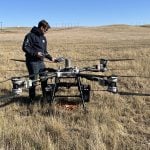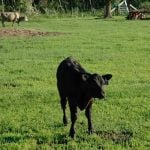
Tag Archives efficiency

Farm-facing drone does the heavy lifting
The AGRAS T100 drone helps streamline a variety of jobs that are required on Prairie farms

How much nitrogen can farmers really cut?
Manitoba fertilizer trials search for the sweet spot where farmers can cut nitrogen rates, with a nitrification inhibitor, without harm to yield

Beef calf creep feeding pays good profits in 2025
Better Bunks and Pastures: With calf values high, creep feeding makes even more sense

Rethinking nitrogen efficiency
Tracking nitrogen with stable isotopes offers surprising insights into fertilizer uptake, loss, and management strategies

Retain your rain
Farmers can get creative to manage water efficiency on Prairie fields

Digging into the cause of poor yields
Did drought, fertility issues or something else lead to that poor crop? We look at the possibilities

How to deal with the farm data deluge
The growers have all the data, but do they necessarily use it?

Drought preparedness through soil and crop management
After each dry year, adapt your drought plan based on your experiences and what you learned

Subsurface irrigation called way of the future
Early adopters in southern Alberta are using drip lines to run water directly to crop roots
Enhanced efficiency fertilizers must pay off
The potential yield gain isn’t enough to entice farmers, soil scientist says


